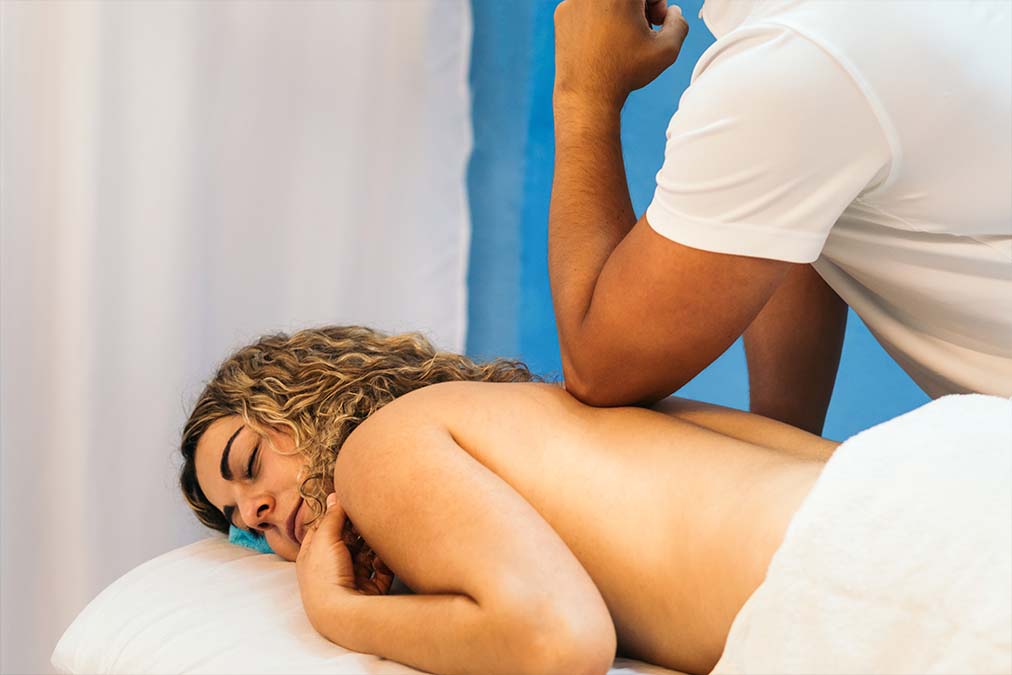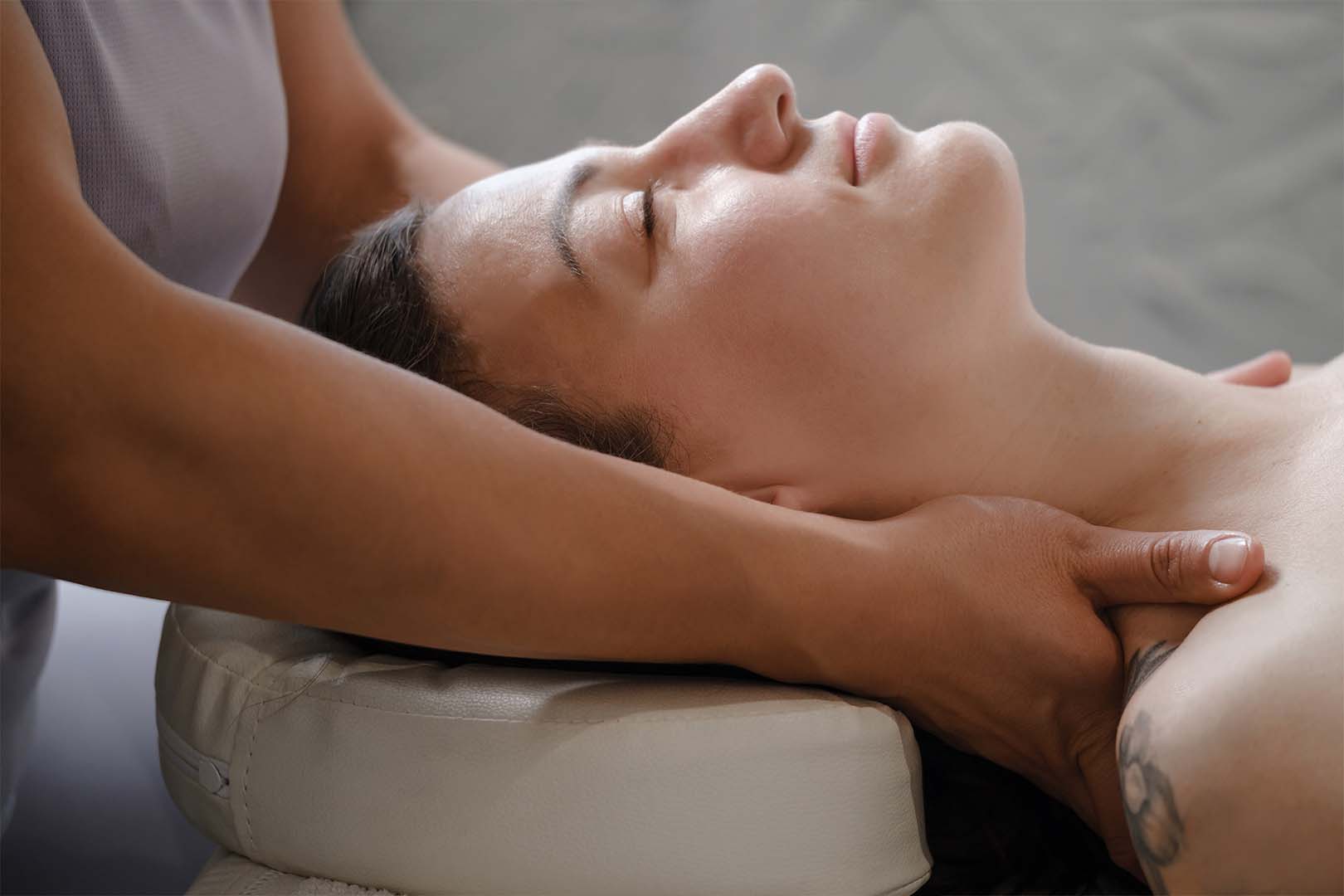Therapeutic massage: pain, tension, and recovery—what the evidence supports
Pain is often stubborn and unpredictable. Sometimes it’s a twinge in the neck after hours at the computer, other times it’s a feeling of tightness in the lower back, or muscles throbbing the day after training. Between painkillers that provide short-term relief and rushed stretching,
Myofascial pain: when the problem is the muscle, not the bone
Myofascial pain originates in trigger points and tight muscle bands. The typical picture combines localized or referred pain, stiffness, and functional limitation. The reasoning behind massage here is simple: modulate pain and tone to allow the muscle to work again within a comfortable “window.” Recent reviews of manual therapy and trigger point massage suggest clinical benefits in pain and function when compared to control/passive treatment, especially in the short term. In other words, it is useful for “lowering the noise” and unblocking movement re-education. The gain tends to be greater when massage is combined with targeted exercises and education (load patterns, sleep, stress management), and when expectations are realistic: to progressively relieve and restore function, not to “erase” pain instantly and permanently.
Neck and lower back tension: what to expect and what not to promise
When it comes to the neck and lower back, science is pragmatic. For neck pain, updates to systematic reviews indicate that massage, compared to usual care, can reduce pain in adults with persistent complaints; the effect is generally modest and more evident in the short term. In the lower back, the most robust evidence indicates that massage improves pain compared to active controls, but has a less consistent effect on function. What does this mean in practice? It serves to pave the way: lowering pain intensity, improving tolerance to touch and movement, and creating space for things that have a sustained impact, such as exercise and self-management. Again, the combination makes the difference: massage + exercise tends to outperform massage alone.
Workout recovery and sleep: fewer “next-day aches and pains,” calmer nights
If you train, you know DOMS — delayed onset muscle soreness 24–48 hours after exercise. Meta-analyses show that post-workout massage can reduce the intensity of this pain and improve some performance markers (strength/torque) in the first 48 hours. It is a small to moderate gain, but real, with practical utility in phases of higher load. On the sleep side, the literature is more heterogeneous: there are studies that point to improved sleep quality in populations with specific disorders, but the methodology is not always robust. Still, for people with high body tension and difficulty “switching off,” a well-dosed relaxation session close to bedtime can help initiate a more stable sleep cycle. Honest advice: try it, measure your personal response, and integrate it with sleep hygiene (natural light in the morning, predictable routine, fewer screens at night).

Indications, limitations, and contraindications: making the right choice is part of the treatment
When it makes sense to consider therapeutic massage
• Myofascial pain with trigger points, stiffness, and functional limitation
• Cervical/lumbar tension associated with sedentary work, stress, or sustained posture
• Recovery from training, especially in blocks of higher load or gradual return to activity
• Somatic anxiety and difficulty relaxing the body (in addition to psychological strategies)
Limitations (so as not to create false expectations)
• Mainly short-term effect on pain; impact on function is more variable
• Does not replace exercise, education, and load adjustments—it complements them
• In complex chronic cases, gains tend to be gradual and require consistency
Contraindications and precautions
• Skin infections, open wounds, burns, or active dermatitis in the area
• Deep vein thrombosis, bleeding disorders, or anticoagulation without prior evaluation
• Active cancer without guidance from the medical team on safe parameters
• Fever, systemic infection, acute phase of trauma without exclusion of serious injury
• Pregnancy: adjust position and techniques; avoid contraindicated points/pressure
• Neuropathies, advanced osteoporosis, or sensitivity changes: measure and adapt
How safety and quality are guaranteed
• Clear initial assessment (medical history, objectives, warning signs)
• Techniques appropriate to the objective (relaxation, myofascial release, gentle mobilization)
• Right dose: tolerable, progressive pressure, always discussed with the person
• Integration with active plan: simple exercises, mobility breaks, sleep hygiene
How we measure progress and when to look for another approach
Progress is not “no pain at all,” it is less pain and doing more. Simple metrics help: pain intensity (0–10), goal tasks (working at the computer for 2 hours without stiffness, walking for 30 minutes, light training the next day without aggravating the condition). In 2–4 weeks, pain reduction, greater comfortable range of motion, and fewer “flashes” of tension are expected. If there is no response, reassess: could the main source be something else (e.g., primary headache, neuropathic pain, depression, sleep disturbances)? In these cases, referral for medical evaluation, physical therapy, or psychology may be the next step. The goal is always the same: to find the most effective and safest combination for that person.
Conclusion
Therapeutic massage has a clear place in a conservative plan for myofascial pain, neck/lower back tension, training recovery, and, in some cases, sleep. The evidence supports benefits mainly in the short term, with small to moderate effects on pain and variable functional impact. Where it makes the biggest difference is as a
References
•https://pmc.ncbi.nlm.nih.gov/articles/PMC11250267/ pmc.ncbi.nlm.nih.gov
• https://www.cochrane.org/evidence/CD001929_massage-low-back-pain cochrane.org
•https://www.bodyworkmovementtherapies.com/article/S1360-8592%2824%2900204-3/fulltext bodyworkmovementtherapies.com
• https://www.hsrd.research.va.gov/publications/esp/evidence-massage.pdf hsrd.research.va.gov
•https://pmc.ncbi.nlm.nih.gov/articles/PMC9965624/ pmc.ncbi.nlm.nih.gov
•https://pmc.ncbi.nlm.nih.gov/articles/PMC12302761/



